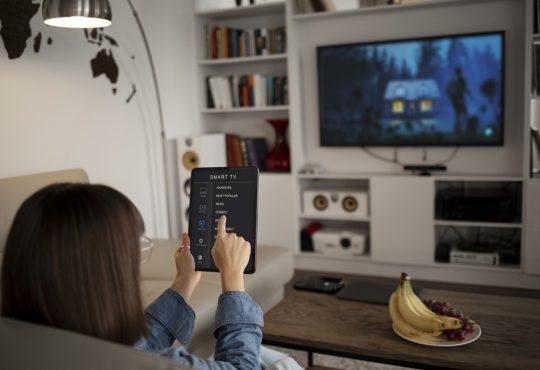As we approach 2025, gaming enthusiasts and industry experts alike are curious about how the PlayStation 5 (PS5) holds up against the competition. Since its release in 2020, the PS5 has been celebrated for its groundbreaking hardware, impressive game library, and immersive experience. However, technology evolves rapidly, and by 2025, gamers will have access to new consoles and innovations. So, the pressing question is: Is the PlayStation 5 still the best console in 2025?
Hardware Performance in 2025
When the PS5 was first introduced, it made headlines with its powerful hardware. Equipped with a custom AMD Zen 2 CPU, RDNA 2 GPU, and a blazing-fast SSD, the PS5 set a new standard for console gaming. But how does this hardware fare five years later?
In 2025, the PS5’s CPU and GPU are still respectable by modern gaming standards, though newer consoles, potentially the PlayStation 6 and competitors from Microsoft or other companies, may boast upgraded processors. However, the PS5’s performance remains impressive, especially for running modern games in 4K resolution at 60 frames per second (FPS). The SSD, which reduces load times significantly, still ensures smooth transitions in games and makes in-game performance more fluid compared to older-gen consoles.
That being said, the PS5’s hardware may start to feel slightly outdated by 2025, especially when compared to newer consoles with even more advanced GPUs and CPUs. The advances in ray tracing technology, AI-driven computing, and cloud-based gaming could put the PS5 at a slight disadvantage if newer competitors fully embrace these technologies. However, for most users, the PS5 continues to offer more than enough power for mainstream and even hardcore gaming.
Game Library Evolution
One of the biggest factors keeping the PS5 relevant in 2025 is its extensive and evolving game library. Between 2020 and 2025, Sony has released a slew of exclusives that have helped maintain the PS5’s status as the go-to console for must-play games. Titles like Spider-Man: Miles Morales, Demon’s Souls, Ratchet & Clank: Rift Apart, and Horizon Forbidden West laid the groundwork for a strong first-party lineup early in the console’s lifecycle.
By 2025, newer exclusives like God of War: Ragnarok, Gran Turismo 7, and Final Fantasy XVI continue to keep the PS5 at the forefront of the gaming world. Sony’s strong relationships with developers, especially first-party studios like Naughty Dog and Santa Monica Studio, guarantee a steady stream of high-quality games.
Furthermore, Sony’s push for remasters and updated versions of classic PS4 and earlier PlayStation titles ensures that the PS5 library continues to expand. Games originally designed for previous generations are optimized for the PS5, with improved graphics, frame rates, and loading times. This means that, despite newer consoles possibly arriving on the market by 2025, the PS5 offers one of the most comprehensive and diverse game libraries, making it a valuable console for any gamer.
Graphics and Next-Gen Capabilities
In 2020, the PS5’s graphical capabilities set a new benchmark with its support for 4K resolution, ray tracing, and high refresh rates. Fast forward to 2025, and these features are still crucial in determining a console’s graphical performance.
The PS5’s support for 4K gaming continues to impress, especially when paired with ray tracing, which enhances the realism of in-game lighting, shadows, and reflections. The graphical quality of games released on the PS5 remains high, although newer consoles may push the envelope further with even more advanced ray tracing technology and support for 8K gaming.
However, the visual experience on the PS5 remains a top-tier experience for most gamers, particularly if they use modern TVs with advanced refresh rates and display technology. While future consoles may surpass the PS5 in raw graphical power, the PS5 remains more than capable of delivering an immersive gaming experience in 2025.
Compatibility and Cross-Gen Play
Backward compatibility has always been a selling point for the PS5, allowing users to play PS4 titles and even some PlayStation classics. By 2025, backward compatibility remains a key feature, allowing gamers to easily switch between current-gen and last-gen games without needing multiple consoles.
Cross-generation play is another area where the PS5 shines. Sony has embraced cross-play, allowing PS5 users to play multiplayer games with PS4 users and even players on other platforms like PC or Xbox, depending on the game. This ensures that gamers who haven’t fully upgraded or who own different platforms can still enjoy games together.
The ability to play both backward-compatible and cross-gen titles will continue to provide the PS5 with a long shelf life, as it maintains relevance not just for new games, but also for older favorites. Gamers appreciate the value of not having to rebuy games or switch between consoles just to access certain titles.
User Interface and Experience Updates
The user interface (UI) of the PS5 was designed to be sleek, intuitive, and easy to navigate. However, as with any technology, there’s always room for improvement. Sony regularly releases software updates to improve functionality, fix bugs, and introduce new features.
By 2025, these updates will have refined the PS5’s UI further, ensuring it remains modern and efficient. Features like customizable home screens, better management of digital libraries, and seamless integration with cloud gaming services are likely to be implemented, making the console experience even more user-friendly.
While some users may prefer a more traditional interface, the PS5’s software updates keep it fresh and adaptable to evolving gamer needs. This is particularly important as cloud gaming and streaming services become more integrated into console ecosystems.
Accessories and VR Innovations
Accessories have played a big role in enhancing the PS5’s experience, and by 2025, the lineup is only more impressive. The DualSense controller, with its adaptive triggers and haptic feedback, remains one of the standout features of the PS5. These features enhance immersion in games by providing tactile feedback that adapts to in-game actions.
PlayStation VR2, which launched after the release of the PS5, offers a new way to experience virtual reality gaming. With enhanced motion tracking, higher resolution, and a more comfortable design, the PlayStation VR2 keeps the PS5 competitive in the realm of VR gaming. This added dimension sets the PS5 apart from other consoles that may not focus as much on VR experiences.
In 2025, the PS5’s accessories, including new headsets, expanded storage solutions, and motion controllers, continue to add significant value to the console. For gamers who want to take their experience to the next level, these accessories ensure the PS5 stays a strong contender.
Price and Market Competition
As with any technology, the PS5’s price will likely fluctuate by 2025. By this time, price reductions may have occurred, making the PS5 more affordable than it was at launch. However, the availability of newer consoles, such as a potential PlayStation 6 or competitors from other brands, might shift the market.
Despite potential competition, the PS5’s price point remains competitive given its hardware capabilities and the breadth of its game library. Many gamers will weigh the pros and cons of upgrading to newer consoles versus sticking with the PS5, which will still offer excellent performance at a potentially lower price.
As newer consoles emerge, the PS5 might remain the console of choice for many due to its value-for-money proposition, especially as prices come down. The availability of bundle deals, including accessories or exclusive games, will further enhance its attractiveness in the marketplace.
Longevity and Future-Proofing
The big question is whether the PS5 will remain relevant in 2025 and beyond. With future-proofing in mind, the PS5 has a lot going for it. Sony’s focus on software updates, backward compatibility, and a growing game library ensures that the PS5 will not be left behind too quickly, even if newer consoles appear on the horizon.
Furthermore, the PS5’s hardware, while no longer cutting-edge by 2025, will still be powerful enough to run most new games with ease. Game developers will continue to optimize titles for the PS5, ensuring that it stays relevant for several more years.
For gamers looking for a console that can last them through the mid-2020s without needing immediate upgrades, the PS5 remains a solid choice. Its continued support from Sony, combined with its vast library of games and accessory options, makes it a console that can still hold its own in 2025.
As we look at 2025, the PlayStation 5 remains one of the best consoles available, thanks to its powerful hardware, expansive game library, innovative accessories, and continued software support. While newer consoles may offer improvements in specific areas, the PS5 still delivers a top-tier gaming experience that appeals to both casual and hardcore gamers alike. Whether it’s the immersive graphics, backward compatibility, or innovative DualSense controller, the PS5 proves that it’s here to stay—still holding the crown in 2025.





